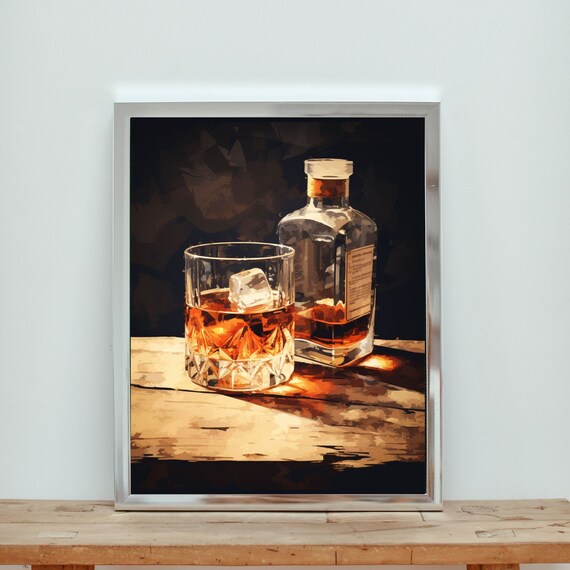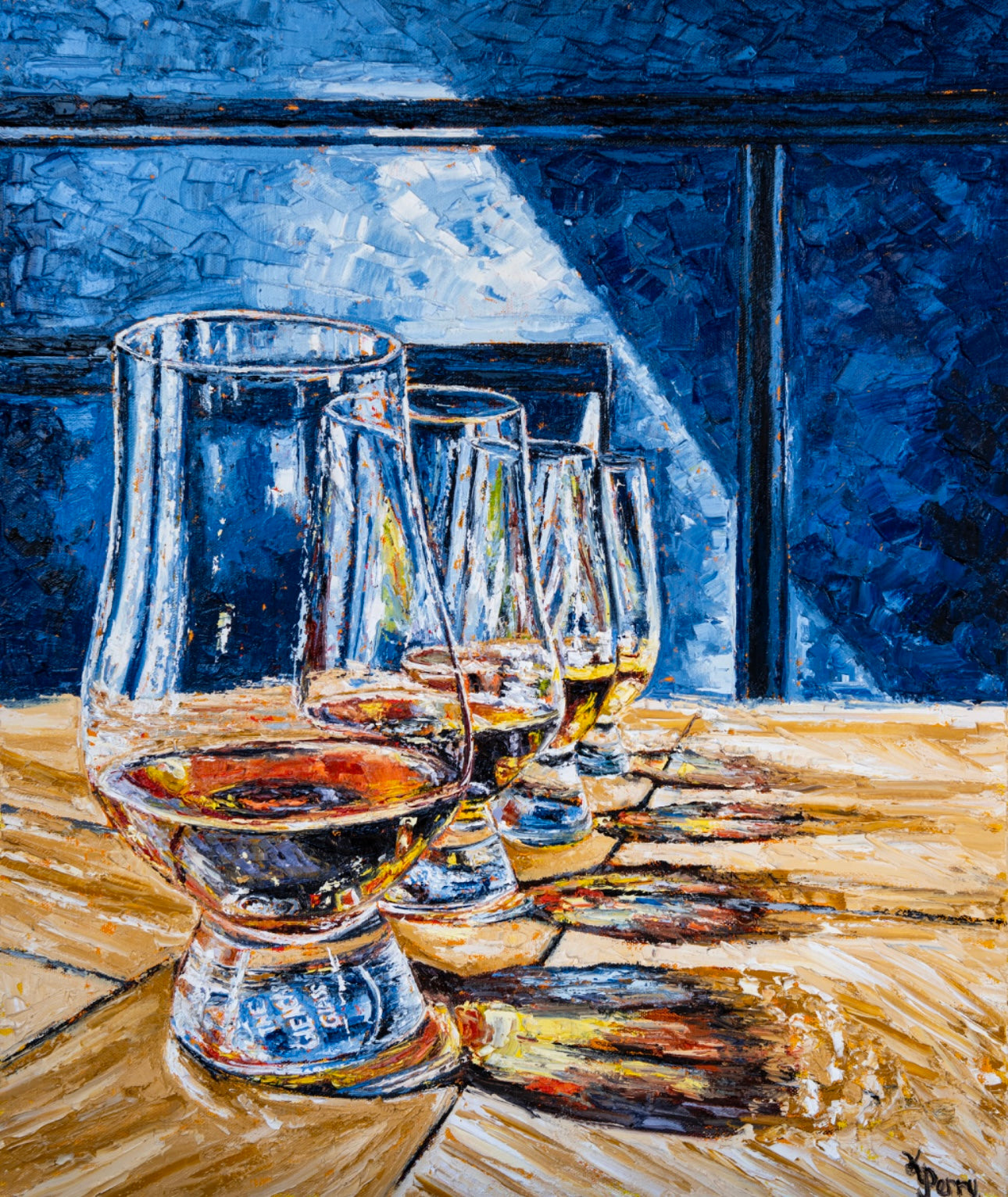Bourbon Art in Contemporary Society: Where Custom Satisfies Technology
Wiki Article
Capturing the Essence of Whiskey Art With Distinct Visual Depictions and Designs
The art of whiskey expands beyond the liquid itself, showing up with a variety of aesthetic representations that encapsulate its storied heritage and workmanship. From the careful style of tags that communicate brand name stories to evocative digital photography that catches the spirit's allure, each artistic expression serves to enhance the consumer's trip. As the sector embraces contemporary trends, the discussion bordering these depictions comes to be progressively abundant and intricate, meaning deeper links in between society and imagination. What remains to be revealed is how these evolving designs reflect not only the scotch itself however also the transforming landscape of imaginative analysis.The Background of Bourbon Art

As scotch manufacturing spread, so as well did the need to raise its experience via art. From the complex engravings on very early casks to the sophisticated labels of modern-day bottles, each aspect mirrors a distinct artistic vision, working as a visual narrative of the scotch's heritage.
In the 18th and 19th centuries, the increase of the commercial change even more boosted whiskey art, leading to ingenious packaging and advertising and marketing that caught customer focus. Designers and musicians started explore appearances, imbuing whiskey-related imagery with symbolic significances that shared ideas of craftsmanship, area, and custom.
Today, scotch art continues to develop, blending traditional approaches with contemporary art types. Whiskey Art. This recurring discussion between the spirit and its graph highlights the enduring bond between scotch and society, enriching the overall experience for enthusiasts worldwide
Iconic Bottle Designs
While many variables add to the appeal of scotch, renowned bottle layouts play a crucial duty fit consumer perception and boosting the overall experience. The aesthetic presentation of scotch containers is not merely a visual factor to consider; it serves as a bridge between the item and the customer, stimulating emotions and setting assumptions.Unique forms, materials, and closures can elevate a scotch brand name's identity, making it instantaneously recognizable on congested shelves. The classic Glenfiddich container, with its sophisticated tapered silhouette, communicates a sense of practice and craftsmanship, while the strong, modern-day design of the Balvenie container shows innovation and refinement. Furthermore, the usage of colored glass or distinct appearances can suggest the quality and personality of the bourbon within.
Legendary designs typically incorporate components of social heritage, symbolizing the brand name's history and connection to its origins. Brand Names like Jack Daniel's make use of an uncomplicated, robust design that reverberates with its American whiskey heritage. Eventually, the impact of bottle design prolongs beyond plain functionality; it envelops the significance of the brand, welcoming consumers to explore and delight in the rich tapestry of bourbon culture.
Label Artwork and Branding
Bottle designs typically set the stage wherefore consumers can expect, yet tag artwork and branding play an equally significant function in interacting a scotch's identification. The label acts as the very first point of get in touch with between the consumer and the product, encapsulating the essence of the bourbon within its aesthetic elements.Effective tag artwork incorporates imagery, color, and typography to develop a narrative that reverberates with the brand's heritage and target market. For example, a label featuring vintage fonts and intricate images may stimulate a sense of practice and workmanship, appealing to aficionados. In comparison, strong shades and contemporary design aspects might draw in a younger group seeking technology and excitement.

Digital Photography and Visual Storytelling
Catching the significance of bourbon through digital photography and visual storytelling is an art kind that elevates the brand experience. This medium goes beyond simple product representation, delving right into the elaborate narratives that surround each bottle. By utilizing compelling imagery, professional photographers can evoke emotions that reverberate with customers, inevitably building a much deeper link to the whiskey brand.Visual storytelling in whiskey photography commonly uses rich appearances, lighting, and composition to highlight the unique qualities of the spirit. The interplay of light and shadow can accentuate the amber hues of whiskey, while the selection of history elements-- such as rustic barrels or elegant glass wares-- can strengthen the brand's heritage or way of life associations.
Furthermore, recording the ceremonial aspects of bourbon usage, from the putting to the sampling, invites viewers into a sensory experience, permitting them to imagine the tastes and fragrances that await. Each photo not just showcases the product yet also narrates of workmanship, custom, and the moments that whiskey can boost - Whiskey Art. Thus, digital photography becomes an effective device in articulating the identification of scotch brands, placing them within the wider cultural landscape
Emerging Fads in Scotch Art
The evolution of bourbon art is significantly shaped by contemporary fads that show broader societal shifts and customer preferences. One famous fad is the combination of sustainability right into art methods. Bourbon Art Artists are currently utilizing green processes and recycled products to create whiskey-themed items, reverberating with environmentally mindful customers. This shift not only highlights the importance of sustainability but also enhances the story surrounding scotch manufacturing.In addition, digital art has actually risen in popularity, enabling ingenious representations of bourbon. Musicians are leveraging technology to craft immersive experiences, such as enhanced truth setups that involve viewers and offer a deeper understanding of scotch's social significance. This trend likewise prolongs to social networks systems, where aesthetically striking web content garners attention and promotes neighborhood amongst fanatics.
Furthermore, collaborations between scotch brands and artists are ending up being a lot more widespread. These partnerships yield limited-edition packaging designs and exclusive artworks that celebrate both the craftsmanship of whiskey and the creativity of artists. As whiskey art remains to develop, these arising patterns will undoubtedly form its future, cultivating a vibrant junction of society, sustainability, and modern technology within the scotch community.
Conclusion
To conclude, the art of scotch includes a diverse selection of graphes that show its abundant heritage and workmanship. From legendary container designs and detailed tag art work to engaging digital photography, each component adds to a more comprehensive story that improves the consumer's experience. As emerging fads, such as electronic art and sustainability, remain to shape this artistic landscape, the multifaceted identification of bourbon stays a sustaining source of social connection and exploration.

In verdict, the art of scotch includes a diverse variety of aesthetic depictions that reflect its abundant heritage and craftsmanship.
Report this wiki page